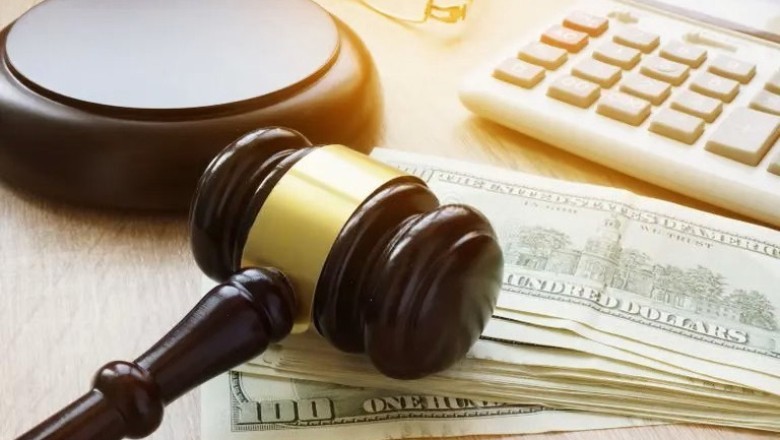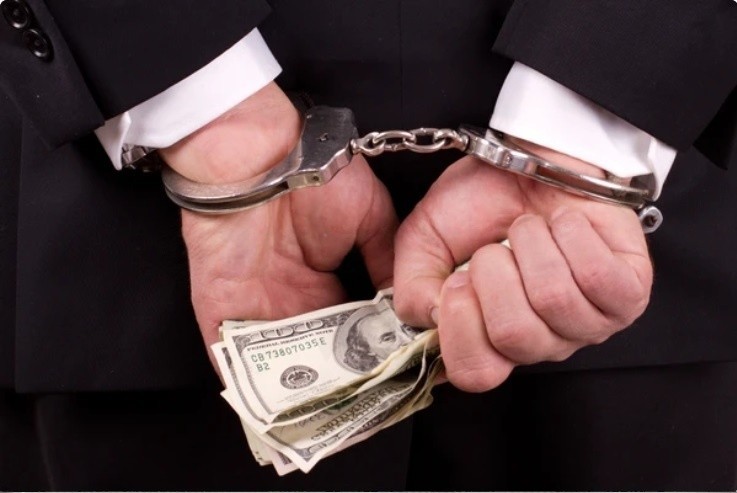
views
The Two-Cent Thief: A Modern Financial Heist
The Unassuming Beginnings
In the bustling world of finance, where millions of dollars are transferred daily, a seemingly insignificant amount like two cents can easily go unnoticed. This is the story of John Doe, a mid-level employee at a prestigious bank, who discovered a loophole that allowed him to siphon off two cents from each transaction. Over the course of five years, John meticulously executed his plan, ensuring that his actions remained undetected. His method was simple yet ingenious, exploiting the bank's complex transactional processes to his advantage.

John was not your typical criminal mastermind. He was a family man, a devoted husband, and a loving father. His colleagues knew him as a reliable and hardworking individual, always willing to lend a helping hand. John's journey into the world of financial crime was not driven by malice but by a desperate need to provide for his family. His story is a complex tapestry of human emotions, financial pressures, and the allure of easy money.
The Perfect Crime
John's scheme was the perfect crime. By taking only two cents from each transaction, he avoided raising any red flags. The bank's auditing systems were designed to detect larger discrepancies, making his small, consistent thefts virtually invisible. John's colleagues and supervisors had no reason to suspect him; he was a model employee, always punctual, and highly efficient. His ability to blend into the background made him the ideal candidate for such a deception.

John's initial thefts were driven by a sense of urgency. His wife had fallen ill, and the medical bills were piling up. He saw the loophole as a temporary solution to his financial woes, a way to keep his family afloat during a difficult time. However, as the months turned into years, John found himself trapped in a web of his own making. The easy money became addictive, and he struggled to find a way out.
The Accumulation of Wealth
Over time, John's two-cent thefts began to add up. What started as a modest sum grew into a substantial fortune. John carefully invested his ill-gotten gains, diversifying his portfolio to minimize risk. He lived a modest lifestyle, avoiding the lavish spending that might have drawn attention to his newfound wealth. His financial acumen allowed him to grow his money exponentially, turning his small thefts into millions of dollars.

John's newfound wealth brought a sense of security to his family. His wife's medical treatments were no longer a financial burden, and his children could attend the best schools. However, the guilt of his actions weighed heavily on him. He struggled to reconcile his love for his family with the knowledge that his wealth was built on deception. John's internal conflict added a layer of complexity to his story, highlighting the human struggle between right and wrong.
The First Signs of Trouble
Despite John's careful planning, the first signs of trouble began to emerge. A routine audit revealed a slight discrepancy in the bank's financial records. Initially dismissed as a minor error, the discrepancy persisted, prompting further investigation. The bank's forensic accountants were brought in to examine the transactional data more closely. Their findings were alarming: a consistent pattern of two-cent deductions across thousands of transactions.

John's initial reaction to the audit was one of panic. He knew that his scheme was unraveling, and the fear of being caught consumed him. However, he also felt a sense of relief. The guilt of his actions had been a constant companion, and the thought of being exposed brought a strange sense of liberation. John's complex emotional response to the audit highlighted the human struggle between fear and relief, guilt and liberation.
The Investigation Begins
The bank's internal investigation quickly escalated into a full-blown criminal probe. Law enforcement agencies were notified, and a task force was assembled to uncover the source of the thefts. John's meticulous planning began to unravel as investigators pieced together the evidence. His digital footprint, once thought to be untraceable, provided crucial clues that led directly to him.

John's world was crumbling around him. The fear of being caught was now a reality, and he struggled to come to terms with the consequences of his actions. His family, unaware of his crimes, was left in the dark as he grappled with the impending fallout. John's story took a dramatic turn, highlighting the human struggle between fear and acceptance, guilt and redemption.
The Elite Legal Team
As the investigation closed in on John, he assembled an elite legal team to defend him. His lawyers were among the best in the business, known for their ability to navigate complex financial crimes. They argued that the evidence against John was circumstantial, pointing to the lack of a clear motive. John's modest lifestyle and unblemished record were used to cast doubt on the prosecution's case.

John's legal team was his last line of defense. They worked tirelessly to build a case that would exonerate him, highlighting his exemplary record and the lack of direct evidence. John's hope for redemption rested on their shoulders, and he clung to the possibility of a favorable outcome. His story took a dramatic turn, highlighting the human struggle between hope and despair, guilt and redemption.
The Judicial Summons
The judicial summons was a turning point in the case. John was called to appear before a grand jury to answer for his alleged crimes. The courtroom was packed with reporters and spectators, eager to witness the proceedings. John's legal team presented a robust defense, challenging the prosecution's evidence at every turn. The trial quickly became a media sensation, with pundits and experts weighing in on the potential outcome.

John's appearance in court was a surreal experience. The weight of his actions bore down on him as he faced the grand jury. His family, now aware of his crimes, stood by him, their love and support a beacon of hope in his darkest hour. John's story took a dramatic turn, highlighting the human struggle between guilt and redemption, fear and acceptance.
The Prosecution's Case
The prosecution's case hinged on the forensic evidence gathered during the investigation. They presented a detailed analysis of the transactional data, demonstrating the consistent pattern of two-cent deductions. Expert witnesses testified to the sophistication of John's scheme, highlighting the careful planning and execution that went into his thefts. The prosecution argued that John's actions were premeditated and deliberate, designed to exploit the bank's vulnerabilities.

John's legal team countered the prosecution's arguments with a series of compelling counterarguments. They pointed to the lack of direct evidence linking John to the thefts, arguing that the forensic data could be interpreted in multiple ways. They also highlighted John's exemplary record and modest lifestyle, suggesting that he had no motive to commit such a crime. The defense's strategy was to create reasonable doubt in the minds of the jurors, casting John as a victim of circumstance rather than a mastermind thief.
The Defense's Counterarguments
John's defense team presented a robust case, highlighting his exemplary record and the lack of direct evidence. They argued that John's modest lifestyle and unblemished record were inconsistent with the profile of a mastermind thief. The defense's strategy was to create reasonable doubt in the minds of the jurors, casting John as a victim of circumstance rather than a criminal mastermind.

John's hope for redemption rested on his legal team's ability to build a compelling case. He clung to the possibility of a favorable outcome, his family's love and support a beacon of hope in his darkest hour. John's story took a dramatic turn, highlighting the human struggle between hope and despair, guilt and redemption.
The Media Frenzy
The trial captured the imagination of the public, sparking a media frenzy. News outlets around the world covered the proceedings, with experts and pundits offering their analysis and predictions. Social media was abuzz with discussions about the case, with many people expressing their opinions on John's guilt or innocence. The media coverage added a layer of complexity to the trial, influencing public perception and shaping the narrative.

John's story became a global sensation, his name synonymous with the two-cent thief. The media frenzy brought a sense of surrealism to his trial, the weight of public opinion bearing down on him. John's struggle between guilt and redemption, fear and acceptance, played out on the global stage, highlighting the human complexity of his story.
The Turning Point
The turning point in the trial came when a key witness testified against John. A former colleague, who had worked closely with John, revealed crucial details about his involvement in the thefts. The witness's testimony provided the prosecution with the direct evidence they needed to strengthen their case. John's defense team was caught off guard, struggling to counter the damning testimony.

John's world crumbled around him as the key witness testified against him. The weight of his actions bore down on him, the fear of being caught now a reality. John's struggle between guilt and redemption, fear and acceptance, reached a crescendo, highlighting the human complexity of his story.
The Verdict
After weeks of testimony and deliberation, the jury reached a verdict. John was found guilty on all counts, including fraud, embezzlement, and money laundering. The verdict sent shockwaves through the financial community, serving as a stark reminder of the consequences of financial crimes. John's elite legal team was unable to sway the jury, who were convinced by the prosecution's evidence and the testimony of the key witness.

John's verdict was a moment of reckoning. The weight of his actions bore down on him, the fear of being caught now a reality. John's struggle between guilt and redemption, fear and acceptance, reached a crescendo, highlighting the human complexity of his story.
The Sentencing
John's sentencing was a solemn affair. The judge handed down a harsh penalty, reflecting the severity of his crimes. John was sentenced to twenty years in prison, with the possibility of parole after serving ten years. In addition to his prison sentence, John was ordered to repay the millions of dollars he had stolen, a task that would be nearly impossible given his current circumstances.

John's sentencing was a moment of finality. The weight of his actions bore down on him, the fear of being caught now a reality. John's struggle between guilt and redemption, fear and acceptance, reached a crescendo, highlighting the human complexity of his story.
The Aftermath
The aftermath of John's trial was felt throughout the financial industry. Banks and financial institutions implemented stricter controls and monitoring systems to prevent similar thefts. The case served as a wake-up call, highlighting the vulnerabilities in the system and the need for greater vigilance. John's story became a cautionary tale, warning others of the dangers of financial crimes.

John's story became a global sensation, his name synonymous with the two-cent thief. The aftermath of his trial brought a sense of surrealism to his story, the weight of public opinion bearing down on him. John's struggle between guilt and redemption, fear and acceptance, played out on the global stage, highlighting the human complexity of his story.
The Impact on John's Life
John's life was irrevocably changed by his actions. Once a respected employee with a promising career, he was now a convicted felon facing a lengthy prison sentence. His family and friends were left to grapple with the fallout, struggling to come to terms with his betrayal. John's story served as a stark reminder of the consequences of greed and deception.

John's struggle between guilt and redemption, fear and acceptance, reached a crescendo, highlighting the human complexity of his story. His life was irrevocably changed by his actions, the weight of his crimes bearing down on him. John's story became a cautionary tale, warning others of the dangers of financial crimes and the consequences of their actions.
The Lessons Learned
The case of the two-cent thief offered several important lessons. It highlighted the need for robust internal controls and monitoring systems to detect and prevent financial crimes. It also underscored the importance of ethical behavior and integrity in the financial industry. John's story served as a cautionary tale, warning others of the dangers of succumbing to temptation and the consequences of their actions.

John's story became a global sensation, his name synonymous with the two-cent thief. The lessons learned from his case highlighted the human struggle between right and wrong, guilt and redemption. John's story served as a stark reminder of the consequences of financial crimes and the importance of ethical behavior.
The Role of Technology
Technology played a crucial role in both the execution and detection of John's thefts. His ability to exploit the bank's transactional processes was made possible by advancements in digital banking. Conversely, the forensic tools and techniques used to uncover his scheme were also the result of technological advancements. The case highlighted the double-edged sword of technology, which can be used for both good and ill.

John's story became a global sensation, his name synonymous with the two-cent thief. The role of technology in his case highlighted the human struggle between right and wrong, guilt and redemption. John's story served as a stark reminder of the consequences of financial crimes and the importance of ethical behavior in the digital age.
The Human Element
Despite the technological aspects of the case, the human element remained central. John's actions were driven by greed and a desire for financial gain. His ability to evade detection for so long was a testament to his cunning and ingenuity. However, it was ultimately human testimony that sealed his fate, demonstrating the importance of personal integrity and ethical behavior.

John's story became a global sensation, his name synonymous with the two-cent thief. The human element in his case highlighted the struggle between right and wrong, guilt and redemption. John's story served as a stark reminder of the consequences of financial crimes and the importance of ethical behavior.
The Broader Implications
The broader implications of John's case extended beyond the financial industry. It raised questions about the effectiveness of the legal system in addressing financial crimes and the role of the media in shaping public perception. The case also highlighted the need for greater transparency and accountability in the financial sector, ensuring that such crimes are detected and prevented in the future.

John's story became a global sensation, his name synonymous with the two-cent thief. The broader implications of his case highlighted the human struggle between right and wrong, guilt and redemption. John's story served as a stark reminder of the consequences of financial crimes and the importance of ethical behavior in the financial industry.
The Legacy of the Two-Cent Thief
John's legacy as the two-cent thief would endure long after his trial. His story served as a cautionary tale, warning others of the dangers of financial crimes and the consequences of their actions. It also highlighted the need for greater vigilance and integrity in the financial industry, ensuring that such crimes are detected and prevented in the future. John's story would be remembered as a stark reminder of the power of greed and the importance of ethical behavior.

John's story became a global sensation, his name synonymous with the two-cent thief. The legacy of his case highlighted the human struggle between right and wrong, guilt and redemption. John's story served as a stark reminder of the consequences of financial crimes and the importance of ethical behavior in the financial industry, ensuring that his legacy would endure for generations to come.




















Comments
0 comment